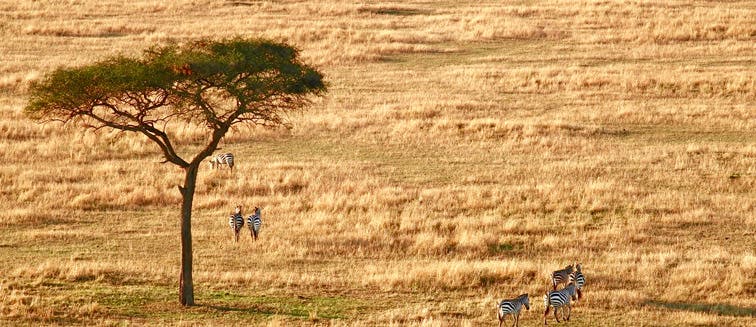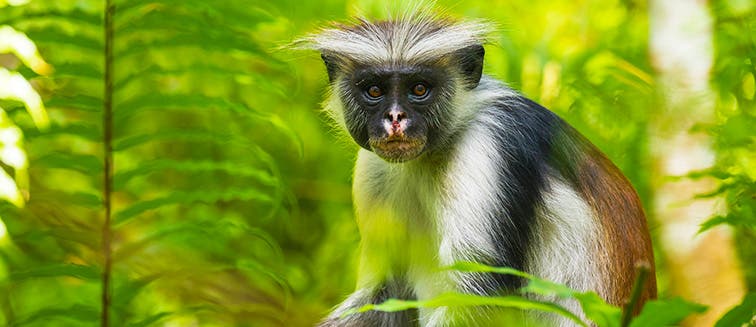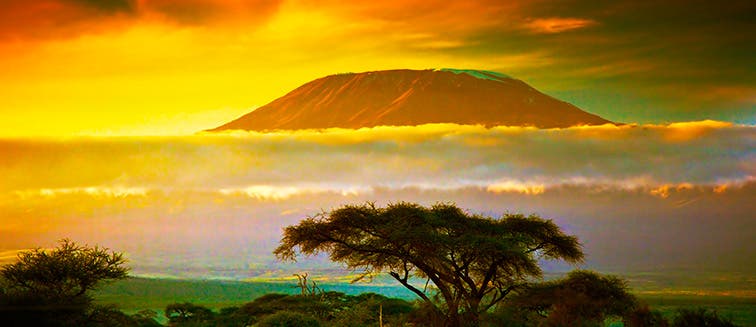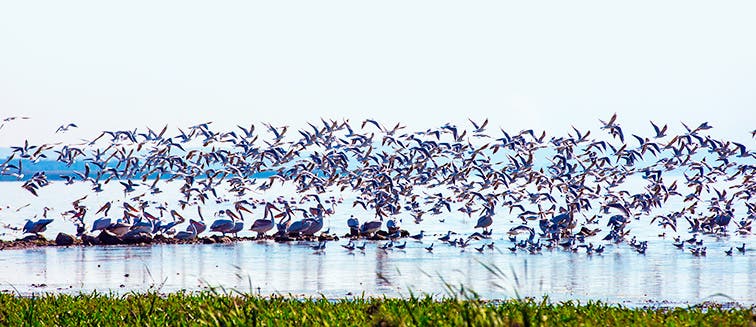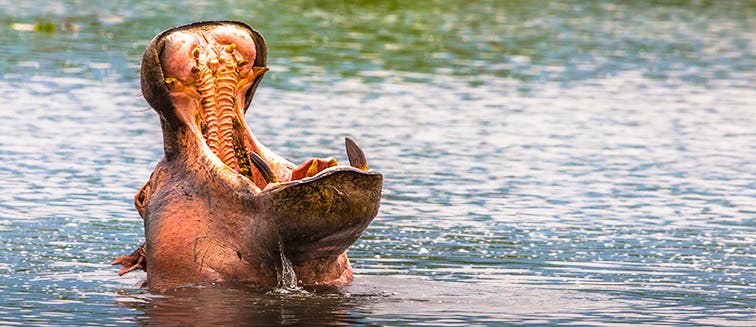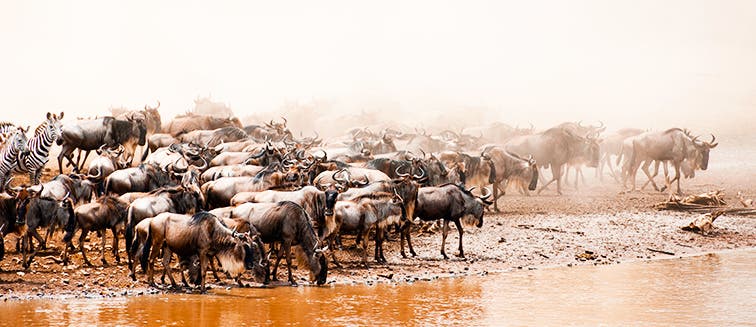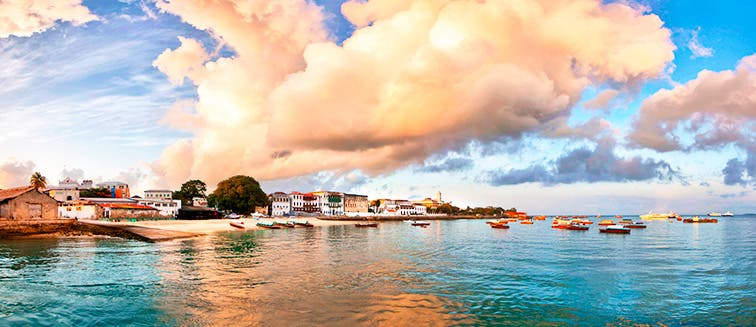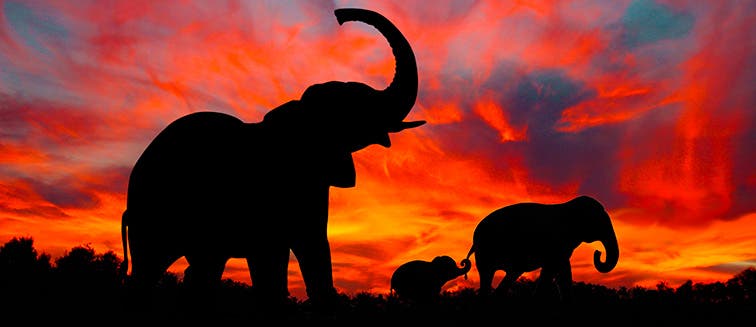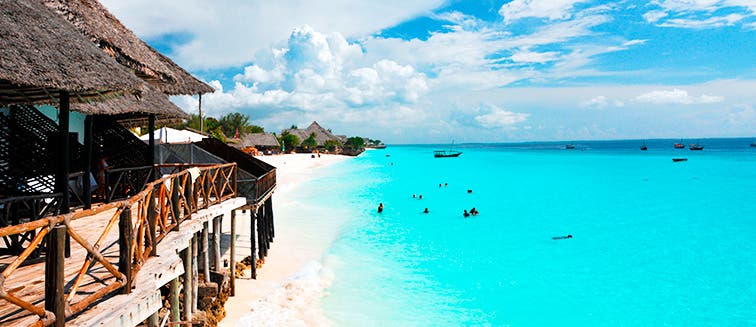Tanzania is the largest country in East Africa and one of the world’s top safari destinations, owing to its unbeatable national parks and its diverse and exotic wildlife. As well as amazing safari opportunities, Tanzania is also well-known for its idyllic beaches, such as those on the island of Zanzibar, and its ancient heritage as one of the oldest continuously inhabited areas on earth.
The de jure capital is Dodoma, but the largest city is Dar es Salaam, located on the Swahili coast. Most travellers who choose a safari in Tanzania will, instead, arrive into Kilimanjaro airport, in the shadow of the mountain of the same name, the highest in Africa and a favourite of adventurous climbers who aim to reach its lofty summit. Tanzania plays host to the wondrous Great Migration between December and March every year in the Serengeti, only adding to its appeal as a wildlife-spotting destination. Travel to Tanzania will almost certainly be focused on its game parks and wildlife destinations, such as Ngorongoro or Tarangire National Park, but Tanzanian culture is a magical bonus to any holiday to Tanzania.
Tanzanian’s are well-known for their diverse culture and the warm welcome they extend to visitors, so be sure to make time to get in touch with the locals, such as paying a visit to the bustling Maasai Market in Arusha or attending the lively Wayambo Cultural Festival, held every January in Dar es Salaam.
History of Tanzania
The history of Tanzania can be traced back to more than 2 million years ago. Humanoid fossils have been discovered in Tanzania and link the area to some of the earliest human civilisations on earth. On a tour of Tanzania today, you can visit Olduvai Gorge, one of the most important paleoanthropological sites in the world, which has helped to reveal countless secrets about the evolution of early humans.
Ancient Tanzanian history is characterised by the movement of a number of different tribal communities into the region, including Southern-Cushitic speakers from the north and Bantu-speaking communities from West Africa. More recent migrants to the territory of Tanzania include Maasai, the best-known ethnic group owing to their distinctive clothing and residences near the nation’s game reserves. Around the 8th and 9th-centuries, travellers and merchants from Persia and India spread the teachings of Islam to Tanzania’s Swahili Coast and the Omani ruler, Said bin Sultan, established the capital of his Sultanate in Zanzibar in 1840.
It was not long before Zanzibar became a centre of the Arab slave trade. By the end of the century, German colonists conquered much of Tanzania, incorporating it into German East Africa. If you travel to Tanzania today, you can still see the influence of this period in the colonial architecture of Dar es Salaam. Following Germany’s defeat in World War I, Tanzania came under British control and eventually gained independence in 1961. During the same period, Zanzibar had a revolution, resulting in their independence and the merging of what was then known as Tanganyika and Zanzibar, to form Tanzania in 1964.
Nature in Tanzania
The ‘Big Five’ are one of the most enticing attractions for travellers who take a trip to Tanzania. Almost 40% of Tanzania’s land area is protected for conservation purposes and the country has a total of 16 national parks, as well as a number of game reserves. A highly biodiverse country, a holiday to Tanzania is sure to be an unforgettable adventure for all wildlife lovers. There’s nothing quite as awe-inspiring as a safari through the African savannah, and Tanzania is the best place to experience this.
One of Tanzania’s most unique landscapes is the Ngorongoro Conservation Arena, the highlight of which is a huge volcanic crater, home to a wealth of wildlife. Safaris here guarantee fantastic wildlife spotting as the walled crater naturally protects and encourages the flourishing of the native wildlife, consisting of at least 25,000 large animals. Tarangire National Park is known for its lion population, in fact, more than 700 can be found prowling this extraordinary reserve. You can also find large herds of elephants here and a diverse mix of landscapes randing from swamps to grassy plains and clusters of giant baobab trees.
A safari holiday to Tanzania is incomplete without contemplating the eternal plains of the Serengeti, the country’s most popular and well-known national parks. Seemingly never-ending savannahs play host to the largest land mammal migration in the world, whilst watching the sunset over the Serengeti is sure to have life-affirming qualities. For a more relaxing slice of Tanzania’s natural beauty, head to idyllic Zanzibar, where white-sand beaches are lapped by the warm turquoise waters of the Indian Ocean.
Culture in Tanzania
Tanzania’s rich cultural tapestry is a result of the amazing diversity of its population, composed of approximately 125 ethnic groups, the largest of which are the Sukuma, Haya, Chagga and Nyamwezi. The most widely-understood language is Swahili, a Bantu language with Arabic influences, although Tanzania is a multilingual country and hundreds of regional languages are spoken throughout the country.
Visitors on a trip to Tanzania will be pleased to know that English is widely spoken in larger cities and tourist destinations. Christianity and Islam are the predominant religions, although indigenous beliefs are practised in some rural communities. From the red-cloaked Maasai people to the hunter-gather communities of Hadza people, meeting local ethnic groups is an integral element of any trip to Tanzania if you want to understand the nature of Tanzanian culture. Tanzanians are known for their politeness and hospitality, so you’ll receive a warm welcome if you travel to Tanzania.
The nation’s colourful and diverse culture is exemplified in its artistic traditions, for example, its Tingatinga paintings, a traditional artistic method involving brightly colourful enamel paintings depicting animals and landscapes, as well as in its delicious national culture, which celebrates the variety of Tanzanian produce and has a number of regional specialities.
A long-standing safari destination, Tanzania is hard to beat when it comes to its concentration of wild animals, captivating landscapes and exciting cultural experiences. Whether you’re a veteran safari aficionado or a first-timer, a safari in Tanzania will open your eyes to an amazing world of wildlife in the African savannah.








